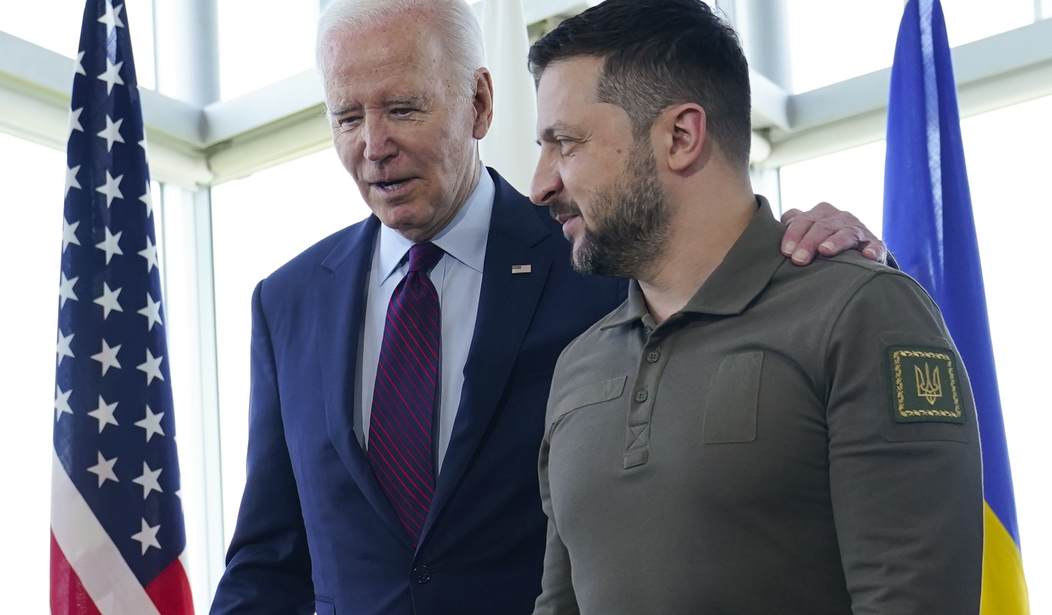Ukraine’s much-touted counteroffensive that was supposed to open a gateway to Crimea by capturing the key city of Melitopol, with its vital highways and strategic rail line, will come up short, according to U.S. intelligence.
The transportation nexus of Melitpol allows Russia to move vast amounts of military equipment to its forces in other areas of occupied Ukraine. But Russia’s defense in depth of the front using massive minefields and fortified trench systems has slowed Ukraine’s advance toward the city to a crawl.
The promise of quick, decisive results in the offensive is gone, replaced with the realization that the war has devolved into a bloody war of attrition that Ukraine can’t possibly win, even with massive amounts of technologically advanced U.S. weapons systems.
Indeed, it appears that the advanced tanks, armored personnel vehicles, M142 HIMARS rocket platform, Patriot missile system, and the most advanced Western drones failed to give Ukraine any advantage in their counteroffensive — despite promises to the contrary.
Perhaps the most decisive reason for the lack of progress in Ukraine’s counteroffensive is that they went off script and decided to change plans in midstream.
Joint war games conducted by the U.S., British and Ukrainian militaries anticipated such losses but envisioned Kyiv accepting the casualties as the cost of piercing through Russia’s main defensive line, said U.S. and Western officials.
But Ukraine chose to stem the losses on the battlefield and switch to a tactic of relying on smaller units to push forward across different areas of the front. That resulted in Ukraine making incremental gains in different pockets over the summer.
This is understandable. NATO advisors were urging Ukraine to push through regardless of the losses to their front-line troops — a strategy that works well if it’s not your troops being mowed down.
“Russia has three main defensive lines there and then fortified cities after that,” Rob Lee, a military analyst with the Foreign Policy Research Institute, said. “It’s not just a question about whether Ukraine can breach one or two of them, but can they breach all three and have enough forces available after taking attrition to achieve something more significant like taking Tokmak or something beyond that.”
As you might imagine, as failure rears its head, the blame game in Washington begins in earnest.
The bleak outlook, briefed to some Republicans and Democrats on Capitol Hill, has already prompted a blame game inside closed-door meetings. Some Republicans are now balking at President Biden’s request for an additional $20.6 billion in Ukraine aid given the offensive’s modest results. Other Republicans and, to a lesser extent, hawkish Democrats have faulted the administration for not sending more powerful weapons to Ukraine sooner.
While not achieving its objectives, Gen. Mark A. Milley, chairman of the Joint Chiefs of Staff, noted Kyiv’s success in degrading Russian forces. “The Russians are in pretty rough shape,” he said. “They’ve suffered a huge amount of casualties. Their morale is not great.”
I would think the morale is a helluva lot better now that the conscripted Russian soldiers have been able, for the most part, to stymie the advance of Ukraine’s army.
But they have suffered a huge number of casualties.
Russia’s military casualties, the officials said, are approaching 300,000. The number includes as many as 120,000 deaths and 170,000 to 180,000 injured troops. The Russian numbers dwarf the Ukrainian figures, which the officials put at close to 70,000 killed and 100,000 to 120,000 wounded.
But Russians outnumber Ukrainians on the battlefield almost three to one, and Russia has a larger population from which to replenish its ranks.
Russia has had a third more soldiers killed but has three times the number of soldiers on the battlefield, plus a huge reserve of manpower at home. Proportionately, Ukraine is losing badly.
“The most deterministic factor of how this offensive has gone thus far is the quality of Russian defenses,” said Lee, noting Russia’s use of trenches, mines, and aviation. “They had a lot of time and they prepared them very well … and made it very difficult for Ukraine to advance.”
So why not a peace overture from Zelenskyy? He has no hope of “winning” anything more significant than what his army has accomplished already. What the Ukrainian president needs is a clear signal from the U.S. that our patience is wearing thin and that the arms spigot is going to close very soon.
Perhaps voting down that $20.6 billion request from Joe Biden for more aid might be just the eye-opener Zelensky — and Biden — need.
